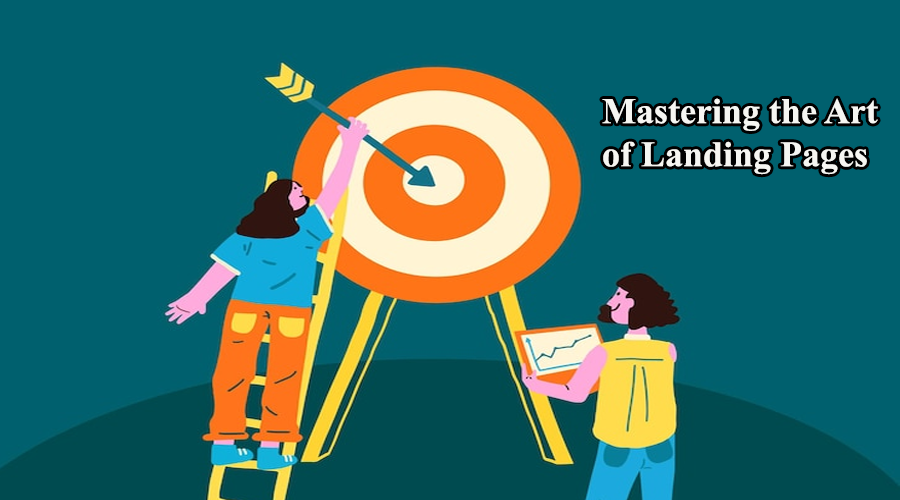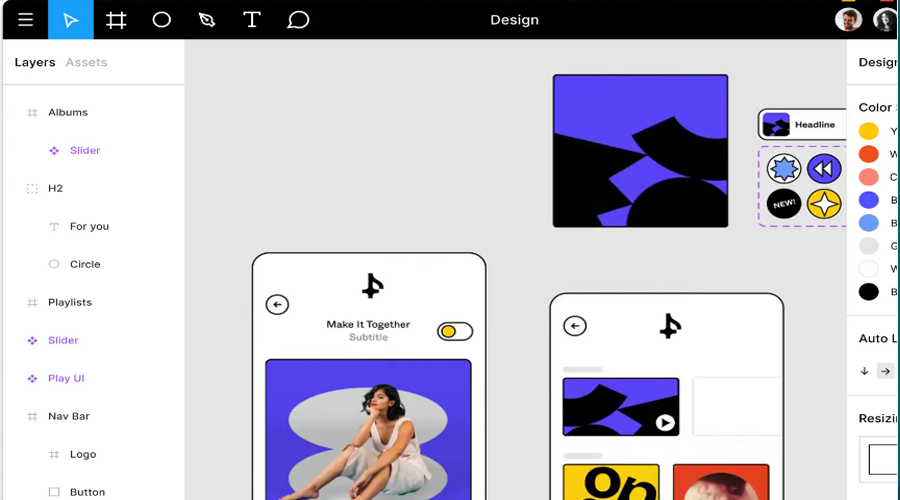However, creating a high-converting landing page is not easy. It requires a deep understanding of the target audience, their needs, their pain points, and their motivations. It also requires a clear value proposition, a compelling headline, a persuasive copy, a strong call to action, and an attractive design. In this essay, we will explore some of the best practices and strategies for creating landing pages that convert. We will also look at some examples of successful landing pages and analyze what makes them effective.
Segment 1: Define Your Goal and Audience
The first step in creating a landing page that converts is to define your goal and your audience. What do you want your visitors to do after they land on your page? What is the main benefit or value that you are offering them? Who are your ideal customers and what are their characteristics, behaviors, and preferences? These questions will help you craft a landing page that is relevant, specific, and appealing to your target market.
To define your goal and audience, you can use various tools and methods, such as:
- Buyer personas: These are fictional representations of your ideal customers based on real data and research. They include demographic information, psychographic information, goals, challenges, pain points, motivations, and objections. Creating buyer personas can help you understand your audience better and tailor your message and offer to their needs and desires.
- Customer journey map: This is a visual representation of the steps that your customers take from becoming aware of your brand to making a purchase or becoming loyal advocates. It shows their thoughts, feelings, actions, and pain points at each stage of the process. Creating a customer journey map can help you identify the gaps and opportunities in your marketing funnel and optimize your landing page for each stage.
- Value proposition: This is a clear and concise statement that summarizes the main benefit or value that you are offering to your customers. It answers the question “Why should I choose you over your competitors?” A strong value proposition should be unique, relevant, specific, and measurable. It should also communicate how you solve your customers’ problems or improve their situation.

Segment 2: Write a Catchy Headline and an Interesting Subheading
The headline is the first thing that your visitors see when they land on your page. It has the power to grab their attention, spark their curiosity, and entice them to read more. According to Copyblogger, 8 out of 10 people will read your headline, but only 2 out of 10 will read the rest of your page. Therefore, you need to make sure that your headline is catchy, clear, and compelling.
Some of the best practices for writing headlines are:
- Use numbers or statistics: Numbers or statistics can make your headline more specific, credible, and eye-catching. For example: “How to Increase Your Landing Page Conversions by 300% in 30 Days”.
- Use emotional triggers: Emotions can influence people’s decisions and actions. By using words that evoke positive or negative emotions, such as curiosity, fear, anger, joy, or surprise, you can make your headline more engaging and persuasive. For example: “The Shocking Truth About Landing Pages That You Need to Know”.
- Use questions or challenges: Questions or challenges can arouse interest and curiosity in your visitors. They can also create a gap between what they know and what they want to know or between where they are and where they want to be. This can motivate them to read more and take action. For example: “Do You Make These 7 Common Mistakes on Your Landing Pages?”.
The subheading is the second thing that your visitors see when they land on your page. It has the role of supporting and expanding on your headline. It should provide more information about your offer or value proposition and explain how it benefits your visitors. It should also address any objections or concerns that they might have.
Some of the best practices for writing subheadings are:
- Use benefits or outcomes: Benefits or outcomes are the positive results or consequences that your visitors will get from your offer or solution. They should be specific, measurable, and desirable. They should also answer the question “What’s in it for me?” For example: “Learn How to Create Landing Pages That Generate More Leads, Sales, and Revenue for Your Business”.
- Use social proof or testimonials: Social proof or testimonials are the evidence or feedback from other people who have used your offer or solution and achieved positive results. They can increase your credibility, trustworthiness, and authority. They can also influence your visitors’ behavior and decisions by showing them what others are doing or saying. For example: “Join Over 10,000 Happy Customers Who Have Boosted Their Landing Page Conversions with Our Proven System”.
- Use urgency or scarcity: Urgency or scarcity are the factors that create a sense of limited time or availability for your offer or solution. They can increase your visitors’ desire and motivation to act quickly and avoid missing out on a valuable opportunity. They can also create a fear of loss or regret. For example: “Don’t Miss This Chance to Get Our Exclusive Landing Page Template for Free. Offer Ends in 24 Hours”.
Segment 3: Provide Customer Service with a Lighter Touch
One of the challenges of creating a landing page that converts is to provide customer service with a lighter touch. This means that you need to anticipate and answer your visitors’ questions and concerns without being too pushy or intrusive. You need to balance between providing enough information and guidance and respecting their privacy and autonomy.

Some of the ways to provide customer service with a lighter touch are:
- Use chatbots or live chat: Chatbots or live chat are the tools that allow you to communicate with your visitors in real time through text messages. They can help you provide instant and personalized support, answer common questions, address objections, and guide your visitors towards your desired action. They can also make your landing page more interactive and humanized. For example: “Hi there, welcome to our landing page. Do you have any questions about our offer? I’m here to help.”
- Use FAQs or help sections: FAQs or help sections are the parts of your landing page where you provide answers to the most frequently asked questions or issues that your visitors might have about your offer or solution. They can help you reduce confusion, uncertainty, and friction and increase clarity, confidence, and trust. They can also save you time and resources by avoiding repetitive inquiries. For example: “Q: How long does it take to create a landing page with your tool? A: It takes less than 10 minutes to create a stunning landing page with our drag-and-drop editor.”
- Use videos or demos: Videos or demos are the media that allow you to show your visitors how your offer or solution works and what benefits it provides. They can help you demonstrate value, explain features, showcase results, and tell stories. They can also appeal to different learning styles and preferences and increase engagement and retention. For example: “Watch this video to see how our landing page builder can help you create beautiful and high-converting landing pages in minutes.”
Segment 4: Go for a Test Drive
Another strategy for creating a landing page that converts is to go for a test drive. This means that you need to test and optimize your landing page before launching it to the public. You need to make sure that your landing page is working properly, delivering the best user experience, and achieving the highest conversion rate possible.
Some of the methods to test and optimize your landing page are:
- Use analytics tools: Analytics tools are the software that allow you to measure and analyze the performance of your landing page. They can help you track various metrics, such as traffic sources, bounce rate, time on page, conversion rate, revenue, etc. They can also help you identify problems, opportunities, and trends in your data. For example: “Google Analytics is one of the most popular analytics tools that can help you monitor and improve your landing page performance.”
- Use feedback tools: Feedback tools are the software that allow you to collect and analyze feedback from your visitors or customers. They can help you understand their needs, expectations, satisfaction, and loyalty. They can also help you discover their pain points, objections, suggestions, and testimonials. For example: “Hotjar is one of the most popular feedback tools that can help you collect qualitative data from your visitors using heatmaps, surveys, polls, etc.”
- Use A/B testing tools: A/B testing tools are the software that allow you to compare two or more versions of your landing page to see which one performs better. They can help you experiment with different elements of your landing page, such as headlines, images, copy, colors, buttons, etc. They can also help you make data-driven decisions based on statistical significance and confidence level. For example: "Optimizely is one of the most.
Conclusion
Landing pages are powerful marketing tools that can help you generate more leads, sales, and revenue for your online business. However, creating a landing page that converts requires a lot of planning, research, testing, and optimization. In this essay, we have discussed some of the effective strategies for mastering the art of landing pages, such as:
- Defining your goal and audience
- Writing a catchy headline and an interesting subheading
- Providing customer service with a lighter touch
- Going for a test drive
By applying these strategies, you can create landing pages that are relevant, specific, appealing, and persuasive to your target market. You can also improve your landing page performance by measuring and analyzing your data, collecting and using feedback, and experimenting with different elements. Remember that landing page optimization is an ongoing process that requires constant improvement and adaptation. By following the best practices and examples that we have shared in this essay, you can create landing pages that convert and grow your online business
